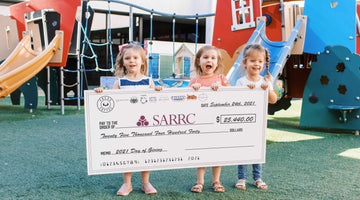If you've been around specialty coffee for any length of time, you may hear people talk about processes like washed or natural, or more exotic processing methods such as anaerobic fermentation or carbonic maceration. New processes seem to emerge each and every day and it can be tough to keep up.
While some processing may be seemingly straightforward like “fully washed” or “natural,” these terms don't necessarily accurately convey the process between picking the coffee cherries from the tree and ending in the drying tables.

Natural
In the most basic sense, 'Natural' processed coffees are coffees dried in the fruit. “Natural” is the most popular term for the whole in-cherry drying, but you may also hear these coffees called dry-process, traditional-dried, sun-dried or cherry-dried.
In-cherry drying will allow the coffee bean to absorb many flavors of the coffee cherry itself. Natural processed coffee will taste fruitier and have a heavier body as the drying coffee bean absorbed some of the sugars from the surrounding fruit.

Washed
Washed coffees may not be what you may initially picture. These coffees aren't mearely washed, but the organic matter is stripped off of the bean within days of the coffee cherry being plucked from the tree. The beans are then washed (this removes any remaining sticky mucilage from the bean) before being dried.

Honey, Pulped Natural & Semi-Washed
The terms honey, pulped natural, and semi-washed can be used more-or-less synonymous. This process refers to coffee that is de-pulped at a wet mill but usually bypasses fermentation tanks and washing channels, leaving a bit of sticky fruity mucilage still clinging to the parchment.
In a practical sense, the terms honey, pulped natural, semi-washed, etc., indicate is nearly identical. More often than not, the term “honey” is used to indicate the same process. Varying colors of honey are chosen to vaguely indicate the amount of fruit left on the seed while it dries, from most to least: black, red, yellow, white.

Anaerobic & Carbonic
You might have come across anaerobic fermentation coffees through our new coffee offerings. This preparation method involves sealed tanks of one kind or another, most commonly with a one-way valve to allow air to escape without letting fresh air in.
The purpose of this fermentation process is to limit the available oxygen. The types of bacteria and yeasts acting on the coffee fruit will be limited to more beneficial types, exciting more explosive flavors than traditional processing.
'Anaerobic' is a broad term that is commonly applied to any sealed, low-oxygen environment. This commonly represents coffees that are processed like washed coffees, with the exception of the additional fermentation process
Carbonic maceration is a wine industry term that has seen more recent applications in coffee. This term refers to whole cherry added to a sealed tank and fermented. These coffees are almost commonly pulped after fermenting and then dried in parchment.
The lack of clarity as to what these terms mean has lead to a explosion in experimental fermentation methods over the past few years. We expect to see coffee processing continuing to evolve as processors experiment with different techniques. We work with farms and producers to find rare or unique coffees, often with experimental processing, with our Limited and Allocation coffees.





